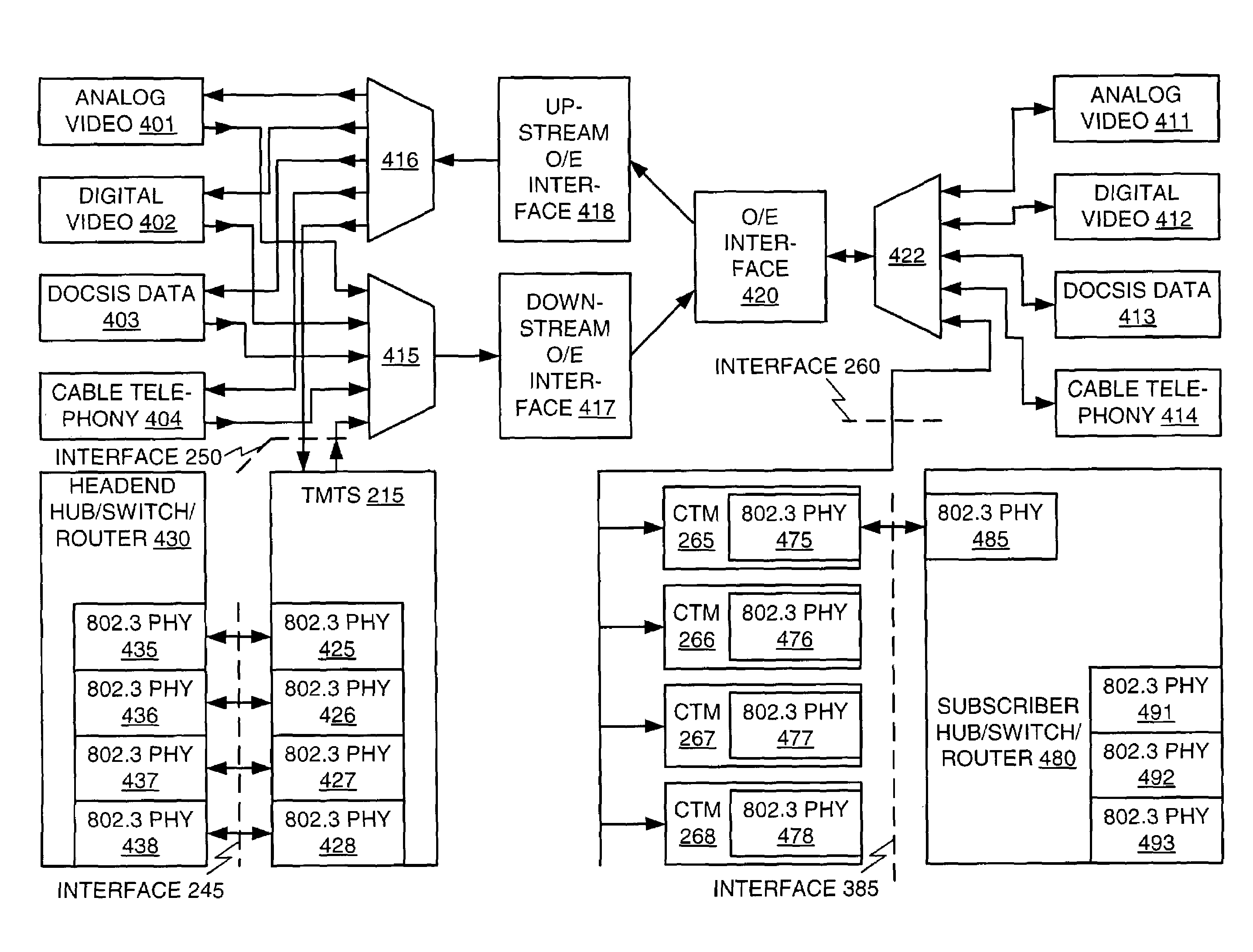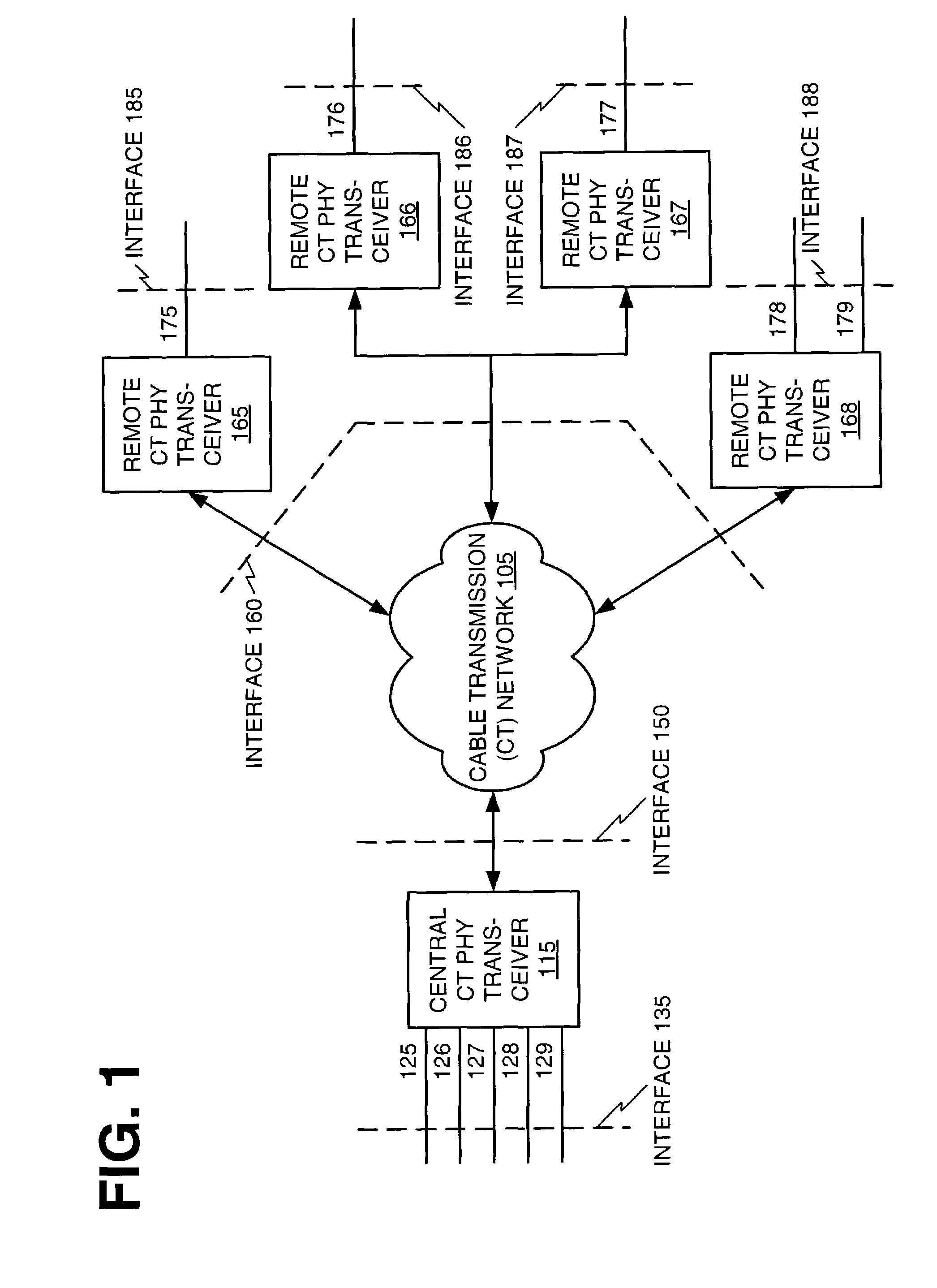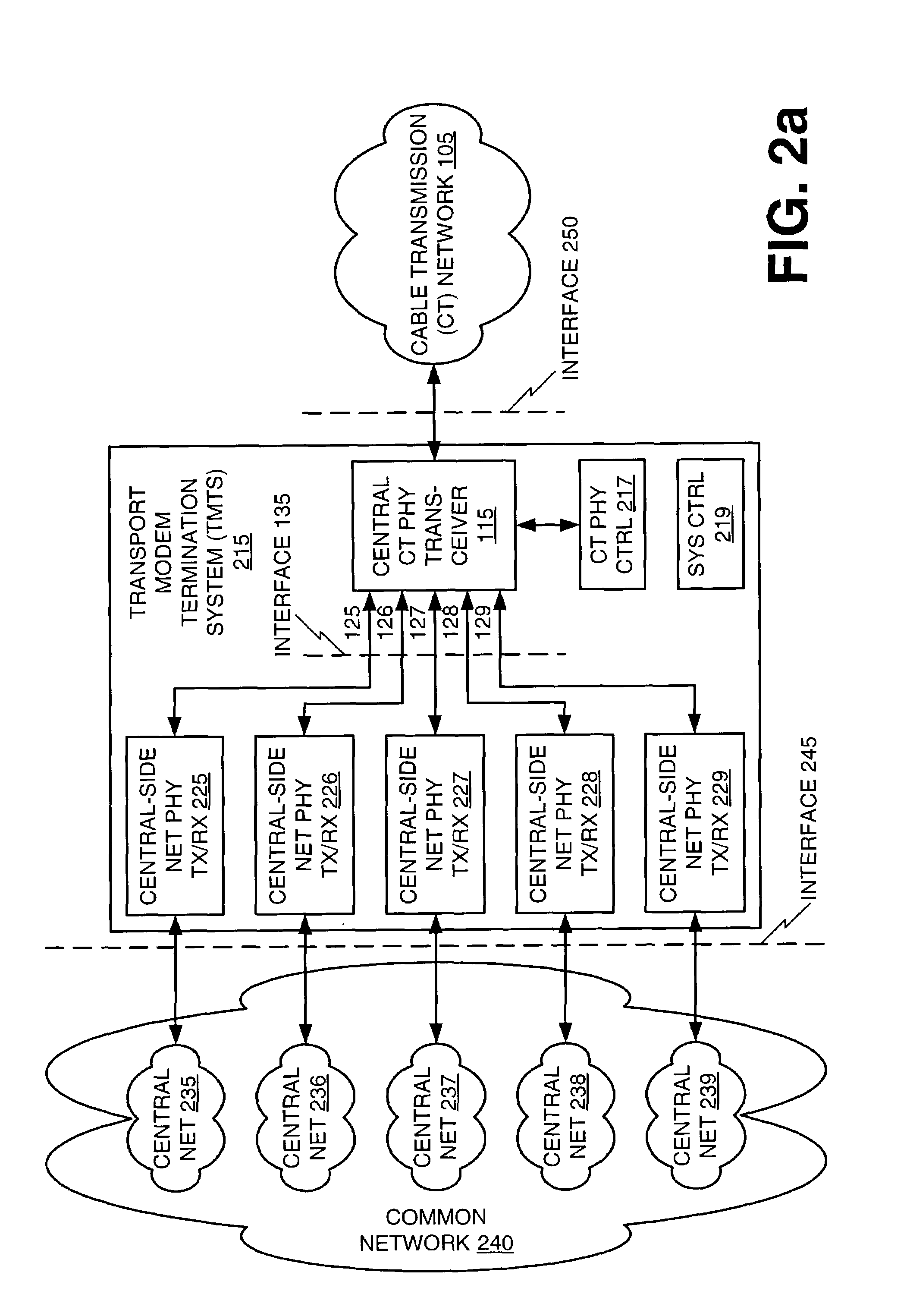Multi-carrier frequency-division multiplexing (FDM) architecture for high speed digital service
- Summary
- Abstract
- Description
- Claims
- Application Information
AI Technical Summary
Problems solved by technology
Method used
Image
Examples
Embodiment Construction
[0038]In general, the seven-layer Open Systems Interconnect (OSI) model is a useful abstraction in analyzing and describing communication protocols and / or systems. The seven layers of the OSI model from lowest to highest are: 1) the physical layer, 2) the data link layer, 3) the network layer, 4) the transport layer, 5) the session layer, 6) the presentation layer, and 7) the application layer. This OSI model is well-known to those of ordinary skill in the art. Furthermore, the OSI model layers have often been broken down into sub-layers in various contexts. For example, the level two, data link layer may be divided into a medium access control (MAC) sublayer and a logical link control (LLC) sublayer in the documentation of the IEEE (Institute for Electrical and Electronic Engineers) standard 802. Furthermore, some of the IEEE standards (such as for 100 Mbps fast ethernet and 1 Gbps gigabit ethernet) break level one (i.e., the physical layer) down into sublayers such as, but not lim...
PUM
 Login to View More
Login to View More Abstract
Description
Claims
Application Information
 Login to View More
Login to View More - R&D
- Intellectual Property
- Life Sciences
- Materials
- Tech Scout
- Unparalleled Data Quality
- Higher Quality Content
- 60% Fewer Hallucinations
Browse by: Latest US Patents, China's latest patents, Technical Efficacy Thesaurus, Application Domain, Technology Topic, Popular Technical Reports.
© 2025 PatSnap. All rights reserved.Legal|Privacy policy|Modern Slavery Act Transparency Statement|Sitemap|About US| Contact US: help@patsnap.com



